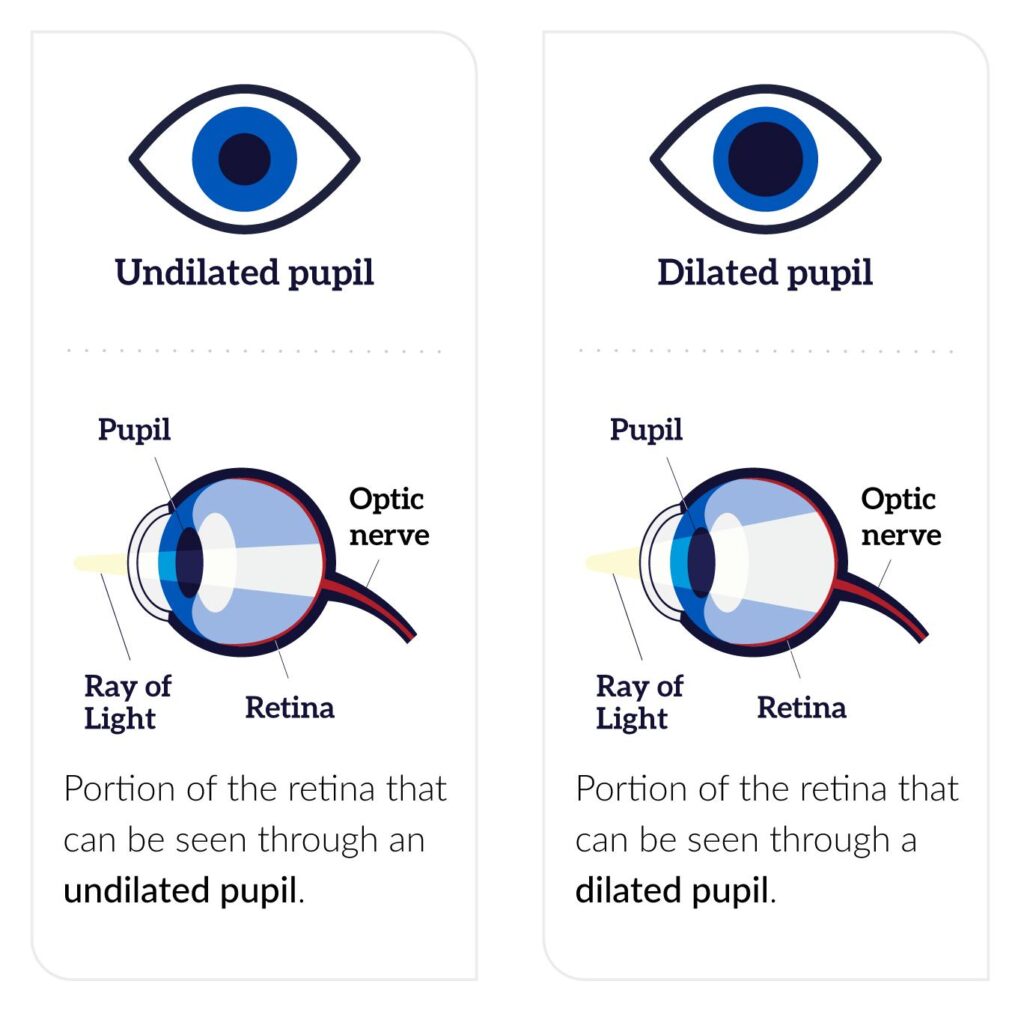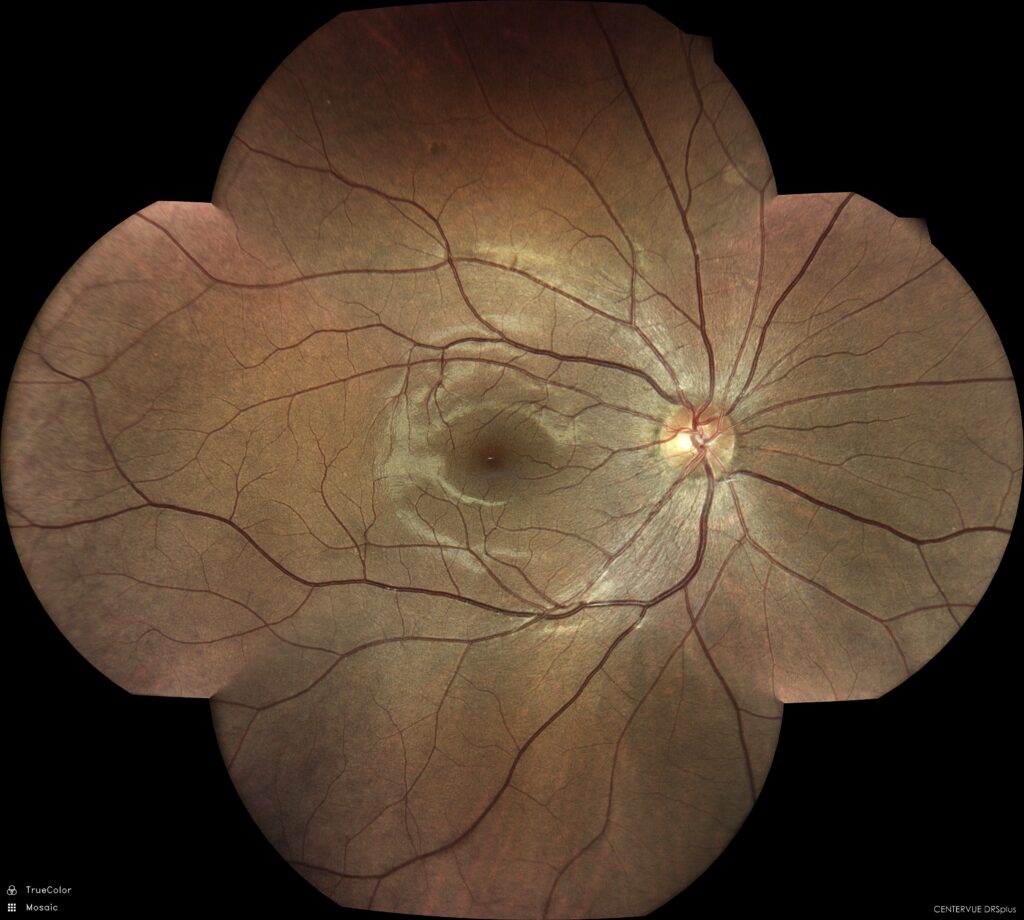Dilation vs. Retinal Images: Should I do both? What about skipping both?
For years, having your eyes dilated by the doctor during an eye exam was considered routine procedure. The doctor could then get a clearer view of your pupils and detect any problems. Although it is still often practiced today, computerized retinal imaging has been used together with the dilation as a cutting-edge procedure. Let’s clarify the differences between dilation and a more recent technology, retinal images.
Dilation
It’s possible that you are familiar with the process of dilation. Eye drops are used in the pupil area, which causes them to widen but also temporarily impairs your vision for four to six hours. It takes up to thirty minutes for the drop to start working, after which the doctor will then examine your eyes with a bright light and a magnification tool. From here, the doctor can see and make a better evaluation of your eyes.

Photo Credit: National Eye Institute
Retinal Images
All of us know that eye dilation can be such a hassle, light sensitivity, and blurry vision…. Ugh! Although it is a little more costly than standard dilation (and may be not covered by most insurance), it has a number of advantages. It first provides a considerably more comprehensive view of the eye. Retinal imaging produces a series of pictures for the doctor to examine rather than inspecting the eyes.
Not only that, but it saves a whole bunch of time. Our Hi-def retinal images only take a second. Just a quick beam of a laser and it is over. There is no pain, no light sensitivity, no blurry vision, and no Uber driver needed. It gets so much more information being able to assess a whole range of issues that can be going on with the eye.
Finally, since the retinal images can capture your blood vessels, arteries, and nerves, it can be used to diagnose signs of eye diseases and conditions affecting your sight, including macular degeneration, hypertension, heart disease, diabetes, glaucoma, stroke risk, ocular melanoma, and even the chance of a stroke. Additionally, we can keep these images on file and utilize it later to get a fuller picture of your evolving ocular health.
While dilation only allows the doctor to see about 15% of your eyes, digital retinal imaging increased by 80%. This means more accurate diagnoses and a better understanding of your health. So, the next time you go in for a checkup, be sure to opt for digital retinal imaging, it is worth every cent!

Can I do just one of those? Or should I do both? Or what about skipping both?
For those who can afford the further cost and do not want to have their pupils dilated, digital retinal imaging is a good option. However, this is merely an alternative to dilation. The use of retinal images can help with the screening for common illnesses of the retina and optic nerve. However, getting your eyes dilated is still advised because with the retinal images alone it cannot completely record your entire retina. For many individuals, particularly those who have a history of eye disorders such retinal detachments, thinning, and tears, dilating is still necessary.